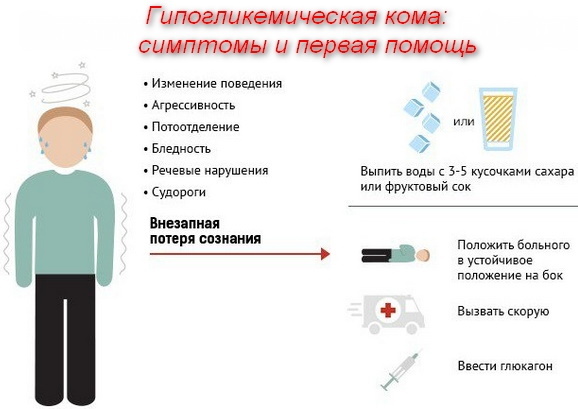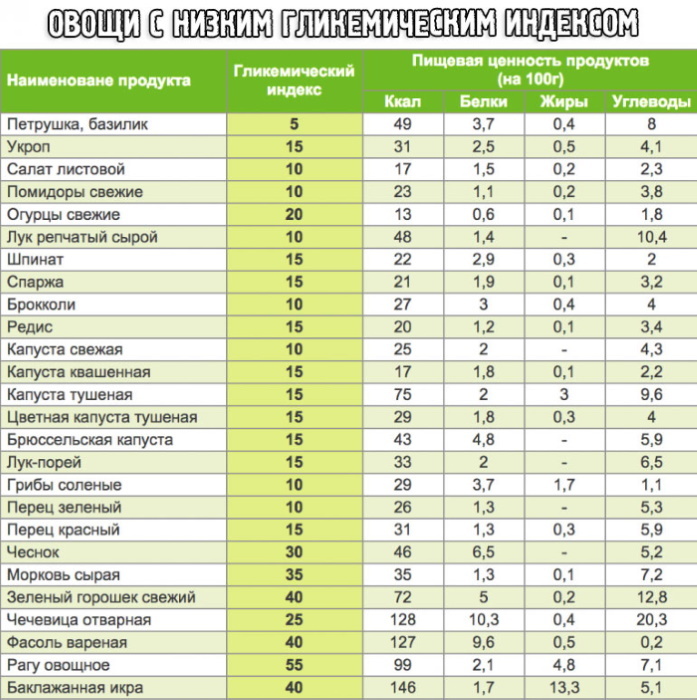Content
- Description of the indicator
- Normal level
- Symptoms of a decrease
- Reasons for the decline
- How to upgrade to normal
- First aid
- Fast methods
- Sugar
- Sweet soda
- Fruit juices
- Honey and sugar
- Prunes
- Glucose tablets
- How to normalize
- Diet
- Medicines
- Folk remedies
- Nutritional supplements
- Possible complications
- Video about hypoglycemia
A condition characterized by a decline blood sugaris called hypoglycemia. Both healthy people and patients who have been diagnosed with diabetes mellitus face this phenomenon. The causes of the disorder can be physiological or pathological. If blood sugar drops, action must be taken immediately, as this condition poses a serious threat to health and life.
Description of the indicator
After eating food, especially rich in carbohydrates, the cells of the body receive glucose. As soon as it enters the bloodstream, the production of insulin by the pancreas begins. This hormone promotes the conversion of sugar into energy for all organs and tissues and maintains its level within the normal range. In a healthy person, the amount of glucose and insulin produced in response to this is equal to each other.
During the day, the amount of sugar in the blood can change for various reasons. The body of a healthy person copes with excess glucose on its own, and patients with diabetes need additional measures to normalize the condition.
Sugar can not only rise, but also fall. If its amount in the blood is below 3.3 mmol / l, hypoglycemia develops. Symptoms come on very quickly and require a quick response.
Normal level
Blood sugar levels for both sexes do not differ. But its level increases slightly with age.
In adults, provided that the blood sample was taken from a finger:
- up to 60 years of age, the amount of glucose should be 3.3–5.5 mmol / l (in women during the period of gestation, 4–5.5 mmol / l);
- at the age of 60-90 years, the amount of sugar rises slightly - from 4 to 6.5 mmol / l;
- after 90 years, its level is even higher from 4.5 to 6.8 mmol / l.
After eating, the indicator rises to 7.8 mmol / l. The norm of sugar when taking blood from a vein is from 3.6 to 6.1 mmol / l.
In infants up to 1 month. the amount of sugar in the blood ranges from 2.8 to 4.4 mmol / l. In children under 14 years old, indicators from 3.2 to 5.3 mmol / l are considered the norm.
Symptoms of a decrease
Some people do not notice a deterioration in well-being, even if the sugar drops to 2.2 mmol / L. For others, a glucose level of 3.0 mmol / L is already critical and can cause loss of consciousness or falling into a coma.
A decrease in glucose levels can be suspected by:
- increased heart rate even in a calm state;
- attacks of dizziness;
- heavy sweating;
- attacks of weakness;
- trembling hands;
- feeling of heaviness in the legs;
- visual impairment;
- pale skin;
- loss of concentration;
- attacks of fear.


Convulsions, confusion, hallucinations and delusions are dangerous symptoms that precede hypoglycemic coma, which can result in cerebral edema and death.
Reasons for the decline
The reasons for the decrease in glucose levels can be physiological or pathological.
In healthy people, the disorder can result from:
- fasting, strict diets, long breaks between meals;
- insufficient drinking regime. Sugar in case of water shortage is consumed in order to maintain normal life;
- stress. In this case, the work of the endocrine system is activated, while sugar is quickly consumed in a short time;
- excessive consumption of refined carbohydrates. An excess of sweets leads to the fact that the pancreas begins to produce insulin in large quantities, while the glucose level drops;
- excessive physical exertion. Intense training leads to an increase in sugar consumption and a decrease in glucose levels;
- high mental stress;
- critical days. With a decrease in estrogen and progesterone levels, there may be a drop in sugar levels;
- intravenous administration of saline in large volumes.
A drop in blood sugar in a patient with diabetes means that the person has missed a meal or exceeded the dosage of insulin or sugar lowering drugs.
Pathological causes of a decrease in sugar:
- dehydration. In this case, there is a lack of vitamins, minerals, sugar, which are excreted from the body in the urine, then, and their deficiency is not compensated from the outside;
- hepatic pathologies that interfere with the normal production of glucose. This is observed in cirrhosis, necrosis, liver failure;
- exhaustion. The reserves of glycogen (a complex carbohydrate consisting of glucose molecules) are at a critical level, the internal reserves of the body are not able to compensate for the glucose deficiency;
- deficiency of certain hormones (cortisol, growth hormone, adrenaline, glucagon);
- pathologies of the gastrointestinal tract, in which the absorption of carbohydrates is impaired (colitis, enteritis);
- alcoholism. The more alcohol enters the bloodstream, the more the sugar level drops;
- severe pathologies of the heart, kidneys, which disrupts the work of the whole organism as a whole;
- sepsis. With this disease, the tissues consume more glucose. Insulin production is increased and glucose synthesis in the liver is decreased;
- meningitis, encephalitis;
- neoplasms in the pancreas of a benign or malignant nature;
- congenital malformations, which are characterized by insufficient glucose production.
How to upgrade to normal
If blood sugar has dropped, it means that you need to react as quickly as possible. First of all, you need to measure your glucose levels without relying solely on symptoms. A deterioration in well-being can also be observed at normal rates, at the same time, a person can feel great even with severe hypoglycemia. Measurements must be repeated as assistance is provided, to assess the state in dynamics.
First aid
If your meter shows low blood sugar, you need to urgently restore your vital glucose readings. Simple carbohydrates will help, the method of administration of which depends on the condition of the person. It is necessary to act quickly, as the state of health deteriorates rapidly, and the patient may lose consciousness.
First aid, depending on the degree of hypoglycemia:
| Degree of hypoglycemia | Signs | How to proceed |
| Easy |
|
Give the sick person sweet tea, candy, some honey, glucose tablets, orange juice, or sweet soda. If after a quarter of an hour the condition does not return to normal, repeat the steps. |
| Average |
|
Oral glucose intake (10-20 g) will help. After the symptoms disappear, the patient should have a snack of meat or cheese and bread, salty cookies with a cup of milk or a piece of any fruit. |
| Heavy |
|
At home, intramuscular injection of glucagon will help. In a hospital, the patient is given intravenous glucose. |
In case of a significant drop in blood sugar levels, the patient should be provided with peace and fresh air before the arrival of an ambulance. It is also necessary to eliminate psychological stress, eliminate possible sources of stress.
Fast methods
You can improve the well-being of the victim using simple products. You should not expect a quick effect, the condition returns to normal within 1 hour. It is important not to overdo it, so as not to provoke an increase in sugar in excess of the norm. Therefore, you need to track the indicators after consuming sweets.
Blood sugar dropped, and the patient's condition at home could not be normalized, which means that hospitalization is needed. In the hospital, the person will be provided with the necessary assistance.
Sugar
The most obvious way to normalize a patient's condition is to give him sugar. A person can eat 1 tsp. l. granulated sugar or drink a solution of 1 tsp. l. sugar and 0.5 tbsp. water.
Sweet soda
Sugary carbonated drinks are contraindicated for diabetics due to their high sugar content. But with a sharp drop in glucose levels, they will help to avoid serious complications.
 People with this problem are advised to keep soda at home and use it when needed.
People with this problem are advised to keep soda at home and use it when needed.
Fruit juices
Another remedy that allows you to normalize a person's well-being is fruit juice. To enhance the effect, you can add sugar to the drink (1 tsp. l.).
Honey and sugar
When the glucose level drops, you can normalize the condition by using a mixture of sugar and honey (1 tbsp. l.). Sugar promotes a rapid flow of energy, and honey provides an additional effect.
Prunes
A handful of prunes will help if the sugar level drops below normal. To enhance the effect, you can additionally drink a sugar solution.
Glucose tablets
Medications are fast acting, as they penetrate the bloodstream immediately after administration. Some of the glucose is absorbed into the bloodstream while still in the mouth. This is provided by enzymes that are produced by the salivary glands. Medicines in the form of tablets do not require digestion, unlike food, so they begin to act immediately, actively increasing glucose levels.
Another advantage of tablets is the ability to accurately determine the required dose. This should be suggested by a specialist, taking into account the type of disease, the condition of the pancreas, the weight and age of the patient. With a mild degree of the pathological process, 12-15 g of glucose is enough, more severe cases require an additional intake of food rich in carbohydrates.
How to normalize
People who periodically suffer from unpleasant symptoms should carry some candy with them. This will help normalize the condition.
But for the constant maintenance of sugar in the norm, a relatively healthy person needs:
- give up bad habits, limit coffee consumption;
- eat often without taking long breaks;
- exclude starvation, rigid diets, adhere to the principles of balanced nutrition;
- replenish the diet with foods high in fatty acids;
- before playing sports, eat foods with quickly digestible carbohydrates;
- regularly monitor the concentration of sugar in the blood. Measurements must be taken at the same time. Diabetics should combine them correctly with insulin injections.
Patients who have been diagnosed with diabetes mellitus can help to avoid a decrease in glucose levels:
- strict adherence to diet;
- avoidance of stress;
- regular, feasible physical activity;
- fulfillment of the recommendations of doctors and the timely administration of prescribed drugs.
In diabetics, sugar can decrease at night, so it is advisable to have a light snack before bedtime. If attacks occur at least 2 times a week, you must inform your doctor about it. You may need to adjust your diet and insulin dosage. The usual dose of insulin can be slightly reduced if sports activities or work in the garden are planned. At the same time, one should not forget to control the sugar level every 2-3 hours, including after the end of physical activity.
Diet
A drop in blood sugar is a reason to pay attention to your diet. With frequent attacks, you must adhere to a special diet. But this does not mean that you need to consume large amounts of simple carbohydrates. Such foods contribute to a rapid rise in sugar levels, but after that it drops sharply, and a person begins to feel hungry. The diet should contain complex carbohydrates, you need to eat food often, but in small portions.

You need to replenish the menu:
- coarse cereals;
- vegetables;
- fruits with a low glycemic index;
- fish and meat of low fat content;
- eggs;
- low-fat dairy products;
- rye bread;
- herbal teas.
Prohibited use:
- sweets, muffins, white bread;
- caffeinated foods and beverages;
- raisins, dates, bananas;
- semi-finished products, quick breakfasts;
- pasta;
- carbonated drinks;
- alcoholic beverages.
Medicines
It should be remembered that some medications can also cause an increase in blood sugar levels.
Caution must be exercised when taking:
- female sex hormones;
- agents for the treatment of thyroid diseases;
- glucocorticosteroids.
If necessary, therapy with such means should be consulted by a specialist and do not forget control the sugar level during treatment, since the dose is selected depending on the indicators funds.
Folk remedies
For the purpose of prevention, you can use traditional medicine that will help maintain normal sugar levels. But before using them, you should also consult your doctor.
Useful use:
- a mixture of dried fruits. They take figs, dried apricots, prunes and raisins and pass them through a meat grinder. You can add a little honey to the mixture and use 1 tsp. l.
- rosehip infusion and medicinal herbs (mint, lemon balm, oregano). Dried fruits (150 g) and herbs (40 g) are combined and poured over with boiling water. Insist 2 tsp, add bran (20 g), 1 tsp. l. sugar, leave for a day. Take 50 ml daily;
- Jerusalem artichoke. The root crop is consumed in unlimited quantities in raw, boiled, baked form;

- cinnamon. The daily dose of the spice is 1 tsp. l. It is added to drinks, fruit salads, desserts;
- infusion of creeper. Herb (3 tbsp. l.) pour boiling water (1 tbsp.), insist half an hour. Take three times a day before meals;
- elderberry. Berries can be used to make stewed fruit, jelly, syrups;
- leuzea. The plant improves blood composition, increases hemoglobin, improves overall well-being, and gives energy. It is recommended to take 15-30 drops of Leuzea tincture with a small amount of water 3 times a day;
- lemongrass. The plant tones, strengthens the defenses, improves the condition when the sugar level drops. A salad is prepared from the leaves by mixing them with finely chopped onions, nettles, dandelion leaves. The dish is seasoned with vegetable oil, you can add a little sour cream.
For prevention purposes, freshly squeezed fruit or vegetable juices can also be used. It is useful to use fruit salads, which include melon, banana, grapes, figs.
Nutritional supplements
To maintain a stable glucose level, it is useful to use special nutritional supplements:
- chromium. This trace element helps to maintain the glycemic balance, efficiently break down glucose, and has anti-inflammatory properties. The supplement is recommended to be taken after meals;
- spirulina. Spirulina-containing preparations help reduce cravings for sweets and prevent fluctuations in glucose levels. You can buy the product in the form of powder or tablets;
- Omega-3. Fatty acids contribute to the efficient storage of nutrients in the body, prevent changes in sugar, prevent the development of inflammatory processes associated with low glucose levels in blood.
Possible complications
With hypoglycemia, the condition worsens very quickly. If you do not provide timely assistance to the injured person, he may lose consciousness, fall into a coma, which often ends in death. With a drop in blood sugar, peripheral vessels are destroyed, this threatens the development of angiopathy of the lower extremities and the retina. If the indicator falls below 2 mmol / L, brain damage is possible.
With frequent attacks of hypoglycemia, the likelihood of developing:
- heart attack;
- Parkinson's disease;
- epilepsy;
- encephalopathy.
A drop in blood sugar is a serious disorder that can have irreversible consequences. Symptoms cannot be ignored, it is important to be able to provide first aid to the victim. To prevent the condition, you will have to reconsider your lifestyle, change your eating habits, quit smoking and drinking alcohol.
Video about hypoglycemia
Low blood sugar:



